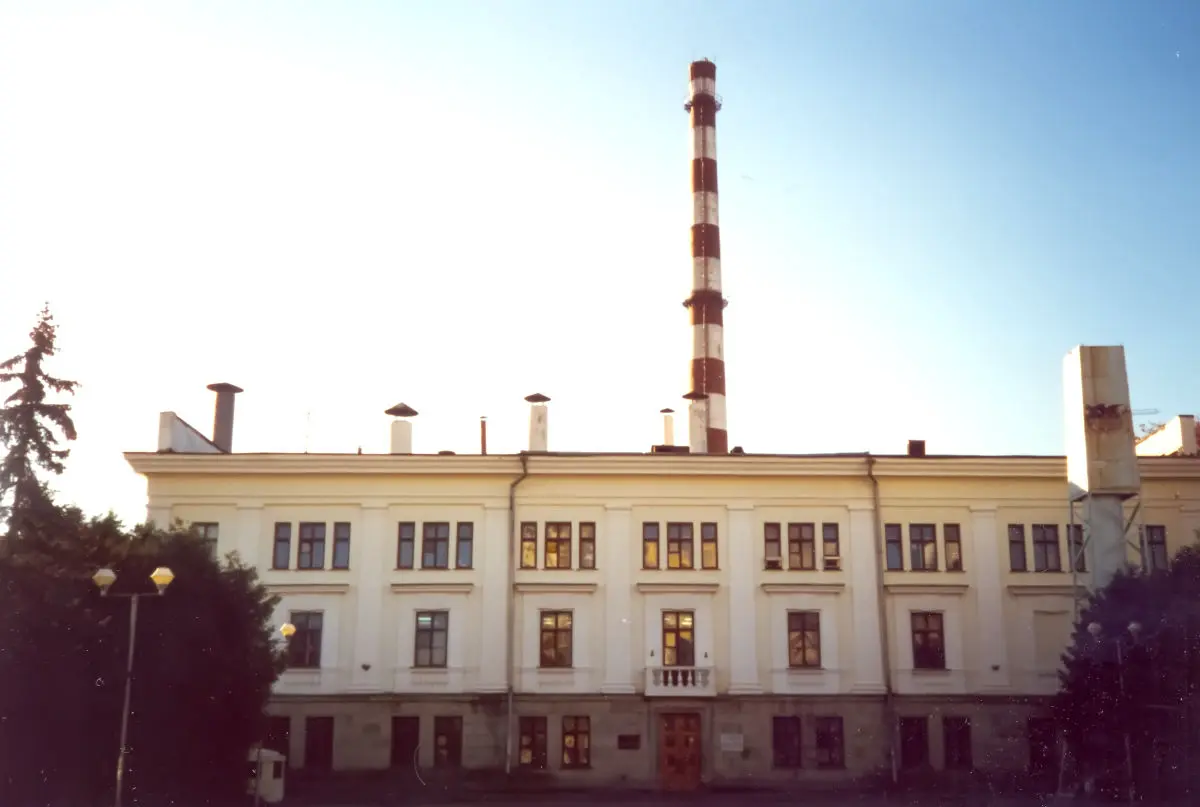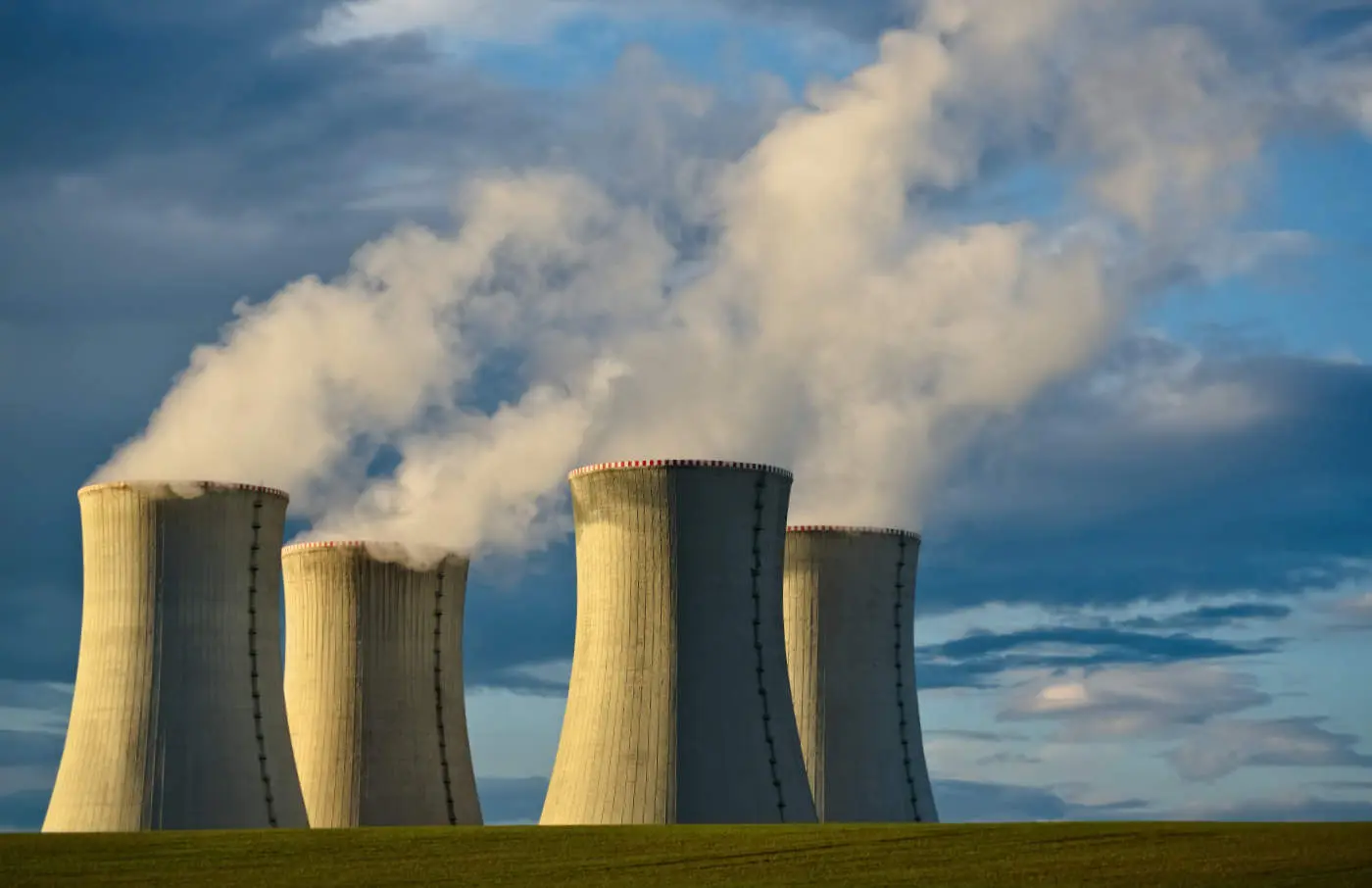Where Was Nuclear Energy First Used?
The first nuclear power plant was built in Obninsk, Russia, in 1954. Learn more about the history and development of nuclear energy in this article.

Nuclear energy has played a significant role in shaping the world we live in today. From powering cities to fueling nuclear weapons, the impact of nuclear energy cannot be understated. But where was nuclear energy first used in history? In this blog post, we will explore the origins of nuclear energy and how it has evolved over the years.
The Birth of Nuclear Theory in the Early 20th Century
The advent of nuclear theory, a cornerstone in the development of nuclear energy, traces back to the pivotal research of the early 20th century. Scientists, embarking on a quest to unravel the mysteries of the atom, made groundbreaking discoveries that would eventually fuel the nuclear age.
At the forefront of this scientific revolution was Albert Einstein, whose 1905 theory of relativity introduced the world to the concept that mass could be converted into an enormous amount of energy, encapsulated in the iconic equation E=mc^2.
This revelation sparked a flurry of research and theoretical work focused on the atom's potential to release vast amounts of energy. Subsequent experiments led by notable figures such as Ernest Rutherford, who probed the inner workings of the atom, and Enrico Fermi, who later achieved the first controlled nuclear chain reaction, built upon Einstein’s work.
These collective efforts laid the groundwork for harnessing nuclear energy, marking the dawn of a new era in science and technology. The exploration into the atom's power opened doors to possibilities that had previously seemed beyond humanity's reach, setting the stage for the monumental developments in nuclear energy that would follow.
The Manhattan Project and Its Role in World War II
The Manhattan Project stands as a pivotal chapter in the saga of nuclear energy, marking its transition from theoretical science to a formidable force in global affairs.
Initiated in 1942, this highly classified United States endeavor aimed to harness the principles of nuclear fission for wartime use. Bringing together some of the brightest minds of the era, including physicists like J. Robert Oppenheimer and Enrico Fermi, the project was a race against time and Axis powers to develop an unprecedented weapon.
Spread across secret sites in the United States, from Los Alamos, New Mexico, to Oak Ridge, Tennessee, the Manhattan Project exemplified the immense investment and collaborative effort required to unlock nuclear energy's potential. Its culmination in July 1945 with the Trinity test not only signaled the successful development of the atomic bomb but also marked a profound shift in warfare and international relations.
The project's outcomes were both awe-inspiring and sobering, demonstrating nuclear energy's vast capabilities while setting the stage for the ethical and political dilemmas that would follow its use in warfare. The Manhattan Project thus not only played a decisive role in concluding World War II but also ushered humanity into the nuclear age, reshaping the course of history.
Where Was Nuclear Energy First Used?
The inaugural utilization of nuclear energy in a practical, non-military application was not for the generation of electricity, but rather for a demonstration of nuclear propulsion.
The first notable use of nuclear power for electricity generation came shortly thereafter, marking a historic milestone in the peaceful use of nuclear energy. While the first nuclear reactors were developed during World War II for the production of bomb material, the transition to peaceful applications became a focus in the post-war era.
The distinction of the first nuclear power plant to supply electricity to a power grid goes to the USSR's Obninsk Nuclear Power Plant in Soviet Russia, which began operation on June 27, 1954.
Please note that we distinguish between the first time a nuclear reactor produced power on an experimental basis and when a nuclear reactor produced power for a grid. The Obninsk Nuclear Power Plant is the latter.
However, even before Obninsk's achievement, the United States Navy had recognized the potential of nuclear energy for propulsion, leading to the launch of the USS Nautilus in 1954, the world’s first operational nuclear-powered submarine. This vessel marked a significant technical achievement by using nuclear energy to provide a new mode of propulsion, though it did not generate electrical power for civilian use.
The First Nuclear Power Plant at Obninsk in 1954
The groundbreaking milestone in the realm of peaceful nuclear energy utilization was achieved with the inauguration of the world's first nuclear power plant in Obninsk, Russia, in 1954.
This landmark facility marked a pivotal shift from the dominantly militaristic use of nuclear energy to its application in civilian life, showcasing the potential for atomic energy to serve as a sustainable power source. The Obninsk Nuclear Power Plant, though modest in capacity, produced electricity that was fed into the local grid, symbolizing a significant technological triumph.
It demonstrated the feasibility of nuclear power for electricity generation on a practical scale, challenging prevailing notions about nuclear energy and its applications. The plant operated with a relatively small reactor, but its success laid the foundational principles that would guide the development of larger, more complex nuclear power stations around the globe.
By venturing into this uncharted territory, Obninsk set the stage for a new era in energy production, highlighting the potential benefits of nuclear power in addressing the world’s increasing energy demands. This achievement underscored the versatility of nuclear energy, propelling forward the exploration and expansion of civilian nuclear energy programs worldwide, thereby altering the trajectory of energy history.
The Development of Civilian Nuclear Energy Programs
The establishment of the Obninsk Nuclear Power Plant marked the beginning of a global shift towards the utilization of nuclear energy for civilian purposes. This pivotal moment in history demonstrated nuclear power's potential beyond military applications, inspiring countries worldwide to explore nuclear energy as a sustainable and efficient source of electricity. In the years following Obninsk's inception, the international community witnessed a surge in the development of civilian nuclear energy programs. The United States, France, and Japan, among others, emerged as frontrunners, investing heavily in research and development to refine nuclear technology for peaceful applications.
This era of innovation led to significant advancements in nuclear reactor design, safety protocols, and efficiency, facilitating the construction of more sophisticated and safer nuclear power plants. The expansion of civilian nuclear energy programs was driven by the dual goals of reducing reliance on fossil fuels and meeting burgeoning energy demands without exacerbating environmental degradation. Nuclear energy, with its capacity to generate vast amounts of electricity without direct emissions of greenhouse gases, became an attractive option for countries striving to balance energy security with environmental sustainability.
The evolution of civilian nuclear energy programs also prompted international cooperation and regulatory frameworks to ensure safety and non-proliferation. Organizations like the International Atomic Energy Agency (IAEA) played a crucial role in setting global standards and facilitating knowledge exchange among nations. This period of growth and collaboration underscored the complexity and potential of nuclear energy, highlighting its significance in the broader context of global energy policy and environmental stewardship.
Nuclear Energy in the Modern World
In contemporary society, nuclear energy stands as a pivotal component of the energy matrix, contributing significantly to electricity generation worldwide.
This form of energy, harnessed in nuclear power plants, has demonstrated its capacity to supply large amounts of base-load electricity consistently, with the added advantage of minimal greenhouse gas emissions during operation. Despite the ongoing debates regarding safety concerns, waste management, and the financial investment associated with nuclear power, it remains an indispensable option for many nations aiming to diversify their energy sources and reduce their carbon footprint.
Advances in reactor technology, such as the development of small modular reactors (SMRs) and generation IV nuclear reactors, promise enhancements in safety, efficiency, and waste reduction, potentially overcoming some of the existing barriers to nuclear energy's broader acceptance. Additionally, the role of nuclear energy extends beyond electricity generation, including applications in medicine, agriculture, and industrial processes, showcasing its versatility.
As the global community grapples with the challenges of climate change and sustainable development, nuclear energy, with its capability to provide clean, reliable power, is poised to be a key player in the transition towards a more sustainable energy future, underscoring its enduring relevance in the modern world.
Summary
In summarizing the journey of nuclear energy from its theoretical underpinnings in the early 20th century to a cornerstone of modern global energy systems, it's evident that its impact is profound and multifaceted.
Initially explored for its destructive capabilities during World War II, the application of nuclear energy has since transitioned into a powerful tool for peaceful purposes, notably in electricity generation and beyond.
The first practical use of nuclear power at Obninsk, Russia, in 1954, marked a historic shift, paving the way for nuclear energy's role in diversifying and securing the world's energy supplies.
Today, as the world faces the twin challenges of meeting increasing energy demands and addressing climate change, nuclear energy offers a potent, albeit complex, solution. Its ability to provide consistent, low-emission power underscores its potential in the sustainable energy landscape.
However, the continued development and acceptance of nuclear energy hinge on addressing the challenges of safety, waste management, and economic viability. As we move forward, the evolution of nuclear technology and international collaboration will be critical in harnessing nuclear energy's full potential for a sustainable future.




